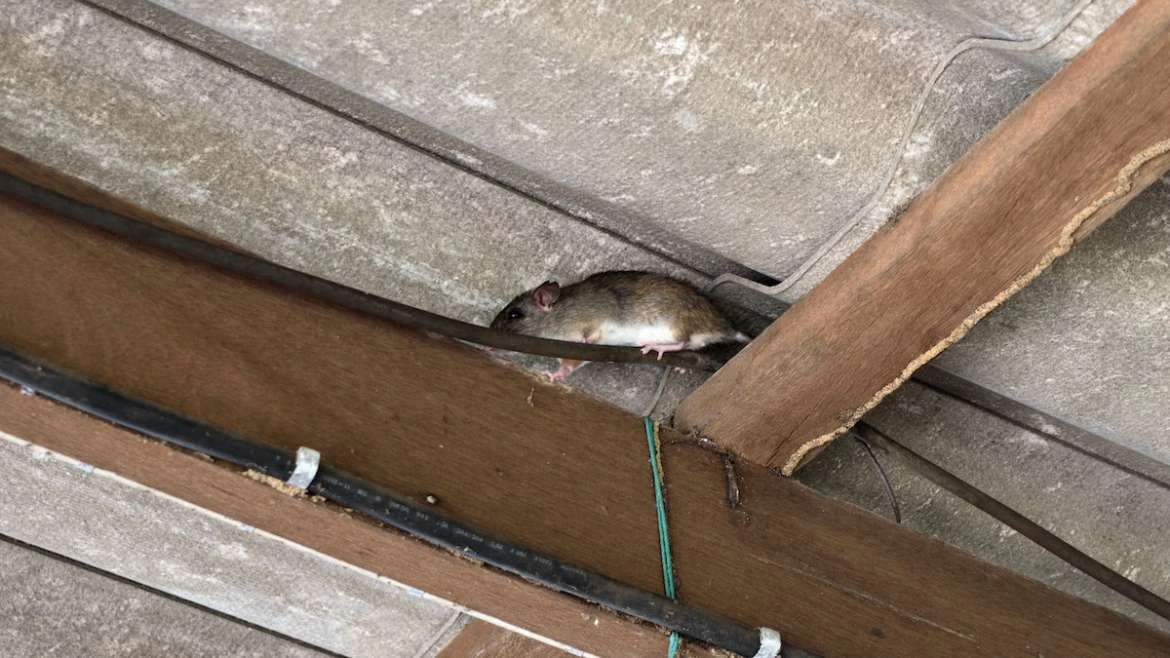Rats and mice certainly have an eek factor, but they are indeed ‘dirty’ – they can carry a range of diseases and parasites, which they can pass on when they feed, urinate and defaecate on your food!
Basically, you don’t want rodents in your house.
Rats and mice can set up home in your house at any time of year, but they often move indoors as the weather gets colder, so early Autumn is a good time to rodent proof your home.
There are 4 areas to focus on:
- Block potential rodent entry points
- Prevent rodents climbing onto the roof
- Eliminate potential hiding / nesting sites outside the home
- Remove potential food sources
Before we start…
How big a hole can rodents squeeze through?
When it comes to rodent proofing your home, it’s important to know what size opening a rodent can squeeze through. Well, rats and mice can squeeze through some pretty small holes – if they can get their head through the hole, they can squeeze the rest of their body through!
The bottom line – rats can squeeze through holes the size of the end of your thumb and mice can squeeze through holes the size of the end of your little finger!
So, the 4 areas to focus on…
Block potential rodent entry points
When you inspect the perimeter of your home for potential entry points, you need to spot all the holes and cracks around doors, windows and pipe entry points. If you have a sub-floor, you also need to consider holes in the floor as the rodents may come up from underneath!
Rodents love to gnaw and can chew through many materials, including wood and plastic. As such, it is important to fill any holes with robust material – thick wire sheeting, metal plates or expandable foam are good options.
Prevent rodents climbing onto roofs
Roof rats, which are the most common rat in Australia, are excellent climbers. As it is virtually impossible to block off all small holes on the roof, it is important to prevent rats from climbing onto the roof. This can be done by cutting off any branches that overhang the roof and put rodent barriers on any drainpipes or supports that the rats could climb up to access the roof.
Eliminate potential hiding / nesting sites outside the home
Rodents are very shy so like lots of hiding places. Removing thick vegetation from the external perimeter of the building and removing any stored goods in sub-floors means the rodents need to come out into the open to access your house (which they don’t like!). These are also the places rodents like to build their nests, so it really pays to keep these areas clear and tidy.

Remove potential food sources
Rodents might be move into your home because it’s nice and warm, but they also need to have a food source nearby. Indeed, mice generally only forage within a few metres of their nest.
Here are 4 things you can do to reduce food sources for rodents:
- Place garbage in sealed bags and place the bags in bins with tight fitting lids
- Store all food in sealed rodent proof containers (glass or very thick plastic)
- Do not leave left over petfood outside after feeding
- If you keep chickens, birds, rabbits or other animals which have grain feed, think carefully about how you feed these animals to avoid left over grain remaining on the ground in areas where rodents can access.
Of course, even with the best rodent proofing, occasionally these sneaky pests still find a way in. For safe, guaranteed rodent control, give the Pest Professionals a call.

